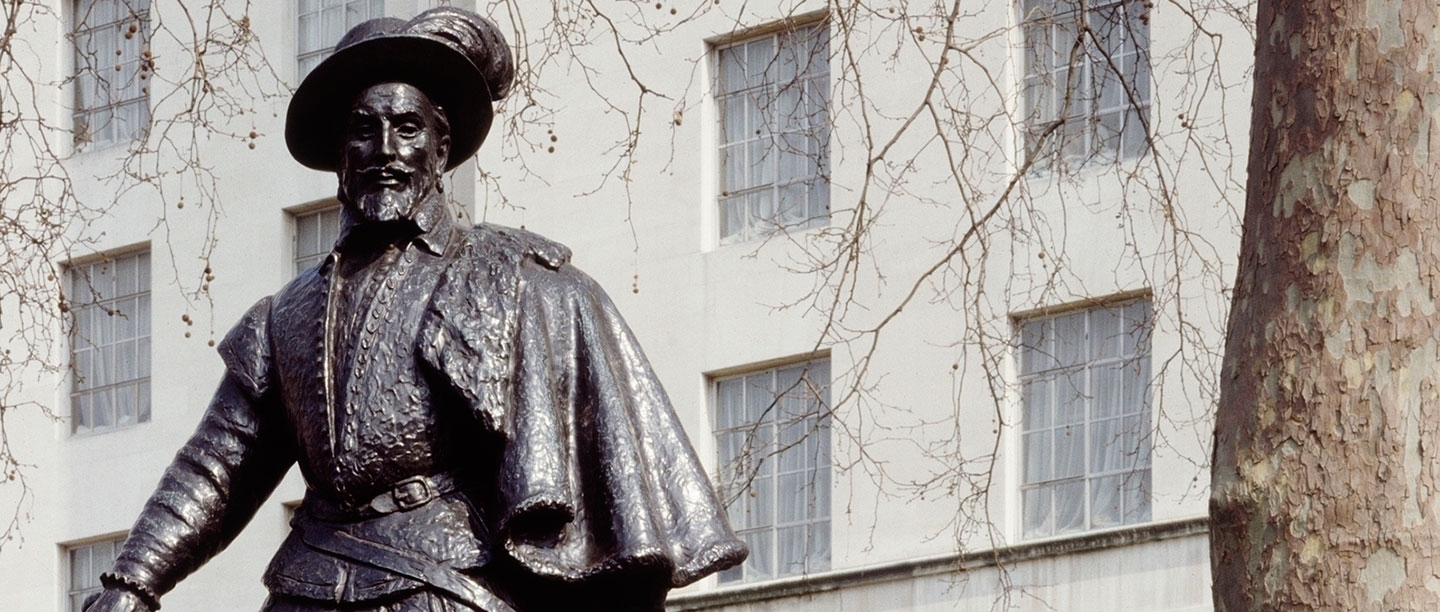English Heritage’s statues
English Heritage is responsible for maintaining 39 London statues. They were erected in the 19th and 20th centuries, and reflect the values of the times in which they were created and unveiled. These values may not align with the values we hold today, particularly when commemorating Britain’s history as an imperial power.
All stages of colonial history can be traced through statues in our care, beginning with the earliest days of European colonialism, with Christopher Columbus (Belgrave Square), through the centuries of British expansionism and the creation of its Empire – personified by Sir Walter Ralegh (Greenwich) and Robert Clive (King Charles Street). They then mark Britain’s imperial wars of the 19th century, with Lord Napier of Magdala (Queen’s Gate) and General Gordon (Victoria Embankment), and the Empire’s final phases, with Lord Curzon (Carlton House Terrace). The monarchs of the imperial centuries also appear: James II, William III, Queen Anne, George II, George III and Queen Charlotte, and Edward VII.
The History of Empire
With the sole exception of Columbus – a 1992 gift from the people of Spain – these statues were first made at a time when Britain remained an empire. At that time, the lives of figures such as Clive and Napier were viewed and taught simply as stories of heroism. Scant attention was given to the stories of the people and peoples under imperial rule, and the British regime was portrayed as benevolent and beneficial.
A balanced view must also address the consequences of actions committed or overseen by the figures depicted in the statues. Robert Clive, his officials and soldiers, plundered Bengal for profit and exacerbated a terrible famine through oppressive and inflexible policies. Lord Napier’s army looted or confiscated cultural treasures from Ethiopia during a campaign to release imprisoned Europeans.
Successive colonial governments inflicted ideas of racial and ethnic superiority and inferiority on generation after generation.
The Transatlantic Slave Trade
The statues are also a witness to the greatest evil of colonialism: the international trade in enslaved African people to plantations in the Americas. James II, William III, Queen Anne and George II all held substantial stocks in the companies that forcibly transported enslaved Africans in their hundreds of thousands on a brutal and often fatal passage across the Atlantic.
James II had been governor of the Royal African Company, and George II, before his accession, had been director of the South Sea Company. George III valued the ‘sugar colonies’ for their contribution to Britain’s war in North America.
Another figure commemorated in statuary, George Washington (Trafalgar Square), while privately expressing moral disquiet at slavery, used enslaved peoples at his own estate throughout his life, freeing them only in his will.
A Duty to Inform
English Heritage is committed to producing reliable and intellectually stimulating information about the figures commemorated by the statues in its care – their wrongful deeds as well as their virtues.
Historical wrongs cannot be undone, but nor can they be ignored – we must confront them and learn from them.
You can read more about the London statues and monuments in our care here.

